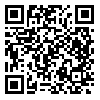Volume 7, Issue 27 (2019)
CFL 2019, 7(27): 53-71 |
Back to browse issues page
Download citation:
BibTeX | RIS | EndNote | Medlars | ProCite | Reference Manager | RefWorks
Send citation to:



BibTeX | RIS | EndNote | Medlars | ProCite | Reference Manager | RefWorks
Send citation to:
hazegh nejad A, Gole zadeh P, Ebrahimi M. Mythological Analysis of a Folk Tale (Matal) Entitled “ Sar Arreh- Pā Tishei” : The Case Study of Bakhtiāri Dialect . CFL 2019; 7 (27) :53-71
URL: http://cfl.modares.ac.ir/article-11-30843-en.html
URL: http://cfl.modares.ac.ir/article-11-30843-en.html
1- Chamran martyr of Ahwaz University
2- Chamran martyr of Ahwaz University , dr.ebrahimi1345@gmail.com
2- Chamran martyr of Ahwaz University , dr.ebrahimi1345@gmail.com
Abstract: (7035 Views)
- The folk tales (Matals) are part of the Bakhtiāri oral literature, which include many beliefs, customs, lifestyles, history and ethnic and national myths. These stories are actively present in the unconsciousness of people and belong to the language of rural population and their narrators. They have an active presence and have meaning in their educational life and entertainment. Throughout history of Iran, the recording and analysis of each of these folk tales contribute not only to protect them from the danger of destruction, but also to enhance the country's cultural and literary capacities. In this research, the authors have selected “Sar Arreh- Pā Tishei” folk tale
(Matal) from the Bakhtiāri’s people myths written by Katāyoun Limouchi. They have then analyzed and validated its narration from the viewpoint of mythical deep structure by adopting field study research methodology. In this folk tale, a sister swallows all living creature either livestock or humans in Ahriman way. This folk tale finds its root in Persian myths especially in Div (demon) , būšâsp and Soroush.
Article Type: پژوهشی اصیل |
Subject:
Public literature of Lori and Bakhtiari
Received: 2019/02/26 | Accepted: 2019/06/15 | Published: 2019/09/15
Received: 2019/02/26 | Accepted: 2019/06/15 | Published: 2019/09/15
Send email to the article author
| Rights and permissions | |
 |
This work is licensed under a Creative Commons Attribution-NonCommercial 4.0 International License. |







